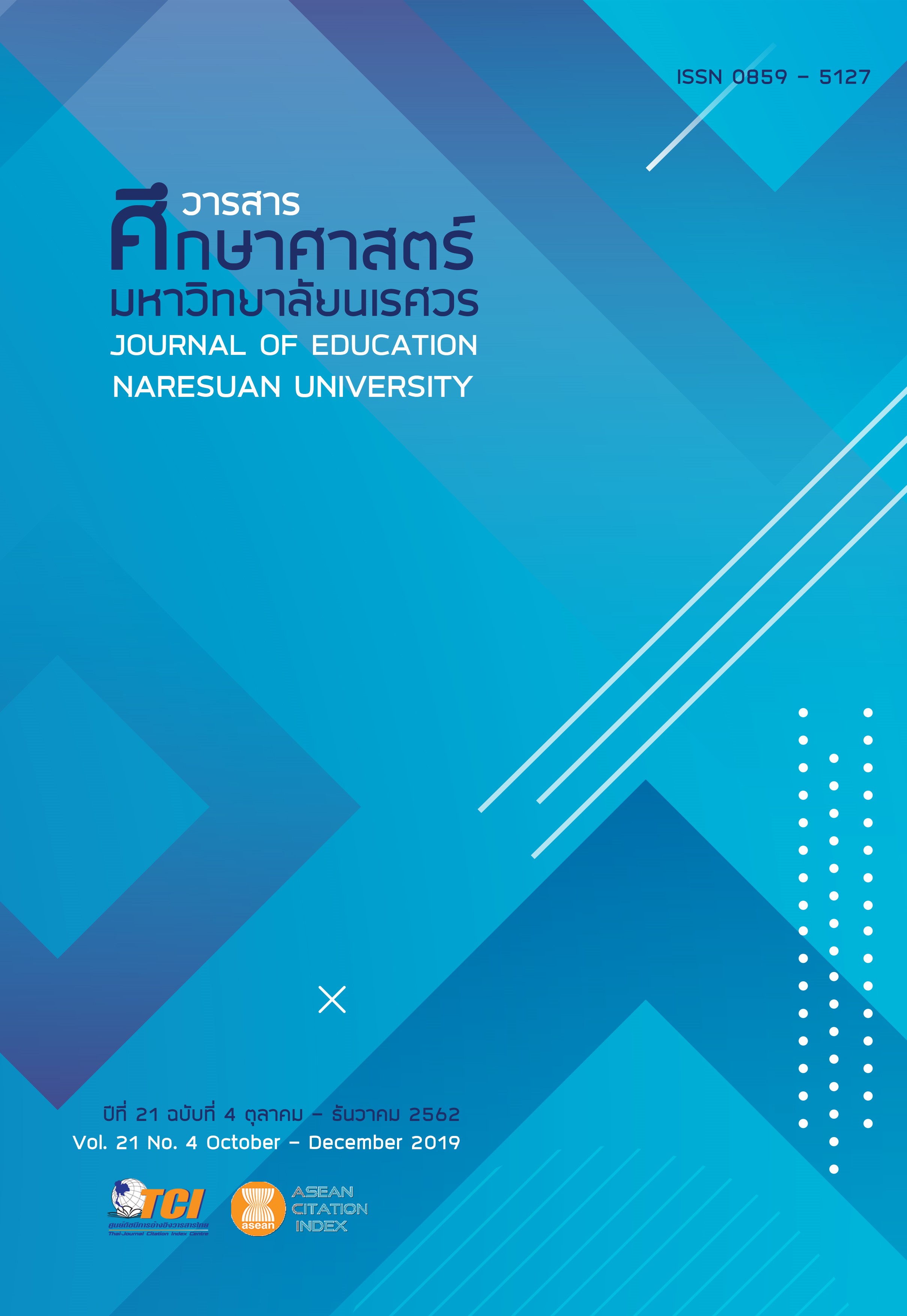พื้นที่่การเรียนรู้สำหรับผู้เรียนยุคดิจิทัลในห้องสมุดสถาบันอุดมศึกษา (LEARNING SPACE FOR DIGITAL NATIVES IN ACADEMIC LIBRARY)
Main Article Content
Abstract
การจัดการเรียนรู้ในศตวรรษที่ 21 เมื่อโลกก้าวเข้าสู่ยุคดิจิทัล การเรียนรู้ของผู้เรียนไม่ได้จำกัดอยู่แค่ในห้องเรียน แต่ผู้เรียนสามารถเข้าถึงแหล่งข้อมูลและแหล่งความรู้ในรูปแบบดิจิทัล กระบวนการหาความรู้ของผู้เรียนเปลี่ยนไปจากการถ่ายโอนความรู้จากผู้สอนไปยังผู้เรียน ปรับเปลี่ยนเป็นกระบวนการที่ผู้สอนจัดประสบการณ์ให้ผู้เรียน เป็นการสร้างสรรค์สิ่งแวดล้อมการเรียนรู้ด้วยตนเอง เปิดโอกาสและช่องทางการเรียนรู้ให้ผู้เรียนได้เข้าถึงสารสนเทศและประสบการณ์จากกิจกรรมการเรียนรู้ ทำให้สถาบันอุดมศึกษาต้องปรับกระบวนการเรียนการสอน จัดสภาพแวดล้อมการเรียนรู้ที่สอดคล้องกับโลกดิจิทัล ห้องสมุดสถาบันอุดมศึกษาในฐานะที่เป็นแหล่งสารสนเทศเพื่อการศึกษาค้นคว้าและเรียนรู้ จึงต้องมีการปรับเปลี่ยนพื้นที่และการให้บริการ โดยจัดเป็นพื้นที่สำหรับการเรียนรู้ใน 4 ลักษณะ คือ 1) พื้นที่การเรียนรู้ 2) พื้นที่สร้างแรงบันดาลใจ 3) พื้นที่พบปะ และ 4) พื้นที่แสดงออก ห้องสมุดได้จัดให้มีพื้นที่การเรียนรู้ไว้ให้บริการ โดยแบ่งเป็นพื้นที่ทำกิจกรรม พื้นที่ส่วนตัว พื้นที่สำหรับการศึกษาส่วนบุคคล พื้นที่ทำงานกลุ่ม ซึ่งมีการออกแบบสถานที่ สภาพแวดล้อม และบรรยากาศของพื้นที่การเรียนรู้เหล่านั้นในด้านกายภาพ การออกแบบตกแต่งภายใน สิ่งอำนวยความสะดวกเพื่อรองรับผู้ใช้บริการยุคดิจิทัล โดยมีตัวอย่างเพื่อเป็นแนวทางของการจัดพื้นที่การเรียนรู้ในห้องสมุดสถาบันอุดมศึกษาในประเทศและต่างประเทศ รวมทั้งอนาคตของการจัดบริการพื้นที่การเรียนรู้ที่ตอบสนองความต้องการของผู้ใช้ในยุคดิจิทัล
LEARNING SPACE FOR DIGITAL NATIVES IN ACADEMIC LIBRARY
21st Century learning when the world enters the digital age. Learning is not limited to the classroom. However, students have access to digital resources and resources. The learning process of learners have changed from knowledge transfer of the instructor to the learner. The instructor provides an experience to the learner, create an environment of self-learning, give opportunities and learning channels for learners to access the information and experiences from learning activities. Higher education institutions need to adjust the instruction process. Provide a learning environment that is consistent with the digital world. The library as a source of information for study and research. Therefore, the area must be modified and service. There are four learning areas: 1) learning space, 2) Inspiration space, 3) Meeting space, and 4) Performative space. The Learning zone is a zone of activity, personal space, study workspace group space, which design, location and environment of the learning space. There are facilities to support users of the digital age. The article will have showed examples are provided as a guide for organizing learning space libraries in Thailand and oversea and the future of learning space.
Article Details
The owner of the article does not copy or violate any of its copyright. If any copyright infringement occurs or prosecution, in any case, the Editorial Board is not involved in all the rights to the owner of the article to be performed.
References
2. Asvapoositkul, P. (2018). Co-working space in library. T.L.A. Bulletin, 62(1), 1-14. [in Thai]
3. Dekdee.com. (2016). 8 most beautiful library in Chulalongkorn University. Retrieved October 4, 2018, from https://www.dek-d.com/board/view/3710805/ [in Thai]
4. eHowMe Channel. (2017). National knowledge center. Retrieved October 10, 2018, from https://www.youtube.com/watch?v=RhxRuVqURJU [in Thai]
5. MANN Library. (2018). Study space. Retrieved October 10, 2018, from https://mannlib.cornell.edu/use/spaces/
6. Mills Memorial Library. (2018). Study spaces. Retrieved October 10, 2018, from https://library.mcmaster.ca/spaces/mills
7. Prachchat.net. (2017). Thammasat University open creative space for startup district. Retrieved October 4, 2018, from https://www.prachachat.net/csr-hr/news-78749 [in Thai]
8. Prachchat.net. (2018). Thammasat University Library compared to the world class university library. Retrieved October, 42018, from https://www.prachachat.net/education/news-151143 [in Thai]
9. Suttipong, R. (2017). A new paradigm in education and development of thailand teachers in the digital age. Journal of Education Naresuan University, 19(2), 344-355. [in Thai]
10. Soorapanth, C. (2015). Constructing learning space. Vajira Medical Journal, 59(4), 29-34. [in Thai]
11. Steelcase. (2018). Every space in a leaning space. Retrieved October 10, 2018, from https://www.steelcase.com/discover/information/education/
12. Thorhauge, J. (2015). Challenges in transforming libraries from collection centered to user centered organization In TK Forum 2015. Bangkok: TK Park. [in Thai]
13. Watson, L. (2013). Better library and learning space: Project, trends and ideas. London: FACET Publishing.


